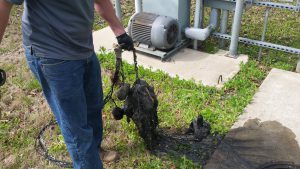Flushable wipes offer a convenient alternative to toilet paper and provide consumers the luxury of an extra clean bottom without the cost of a bidet. However, these wipes are notorious for clumping together with human waste, congealed oil, sediment, and various foreign objects in the sewage system leading to blockages.

Photo by (ecaf_sinep/reddit)
As of 2013, it was estimated that flushable wipes are partly responsible for blocked sewage systems and would cost Canadian ratepayers upwards of $250 million per year (read full article here).
Manufacturers (Kimberley-Clark, SC Johnson, Nice Pak, etc.) assert that their products branded as “flushable” undergo a barrage of lab and field testing to ensure their “flushability”. In contrast, consumer reports emphasize that flushable wipes do not disintegrate after 30 minutes in toilet-flushing simulators whereas toilet paper breaks down in approximately 8 seconds (See Video Above).
THREE Areas of Address:
1) Educate the Consumer, include clear and honest labelling on packaging
2) Invest more R&D in to Flushable Wipe design (here’s a cool article)
3) Less likely due to complexity and cost: address municipal wastewater treatment infrastructure (pipe lines, strainers, reservoirs, etc.)
What are TEN NON-FLUSHABLE items which are commonly found in sewage blockages?
- Flushable wipes (baby, facial, sanitary)
- Tampons/Pads
- Dental Floss
- Q-Tips
- Flushable Kitty Litter
- Paper Towel
- Grease
- Band Aids
- Medication
- Hair

Recent Comments